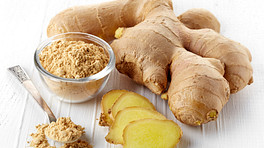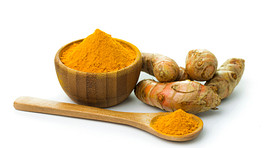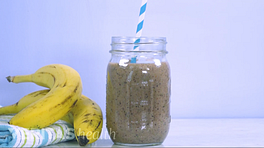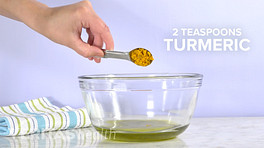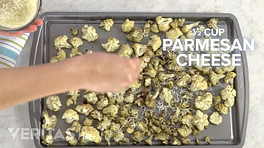Eating anti-inflammatory foods may reduce arthritis-related pain in the short term and can improve overall health in the long-term. Knowing which foods promote inflammation and which foods typically prevent inflammation is essential. It is also crucial to understand these points:
- Anti-inflammatory diets may vary from person to person, depending on his or her biology.
- An anti-inflammatory diet is a lifestyle change, not a short-term solution.
- Exercise can enhance the positive effects of an anti-inflammatory diet on arthritis pain.
In This Article:
- An Anti-Inflammatory Diet for Arthritis
- What Are Anti-Inflammatory Foods?
- The Ins and Outs of an Anti-Inflammatory Diet
- Video: The Best-Tasting Anti-Inflammatory Cocktail You've Never Tried
Anti-Inflammatory Diets Are Not One-Size-Fits-All
Evidence suggests that, just like medications, specific diets may work better for some people compared to others. 1 Vel Szic KS, Declerck K, Vidaković M, Vanden Berghe W. From inflammaging to healthy aging by dietary lifestyle choices: is epigenetics the key to personalized nutrition? Clinical Epigenetics. 2015;7(1):33. doi:10.1186/s13148-015-0068-2. For example:
- One person may find he or she has notably decreased inflammation and arthritis pain on a traditional anti-inflammatory diet, while another person may find the positive affects to be mild or non-existent.
- Certain people may notice decreased pain and inflammation by eliminating specific foods that cause inflammation for them. For example, whole wheat can be a part of a healthy diet, but some people may discover gluten, made from proteins found in wheat, causes inflammation for them.
Because there is no one-size-fits-all anti-inflammatory diet, a person with arthritis may have to work with a doctor or nutritionist and experiment with different foods to find the optimal anti-inflammatory diet.
Watch: Video: The Best-Tasting Anti-Inflammatory Cocktail You've Never Tried
Sticking with It to See Results
Unlike pain medications, which may take just minutes to work, an anti-inflammatory diet may not produce its full effects for several days or even several weeks.
See Pain Medications for Arthritis Pain Relief
The effects may be difficult to notice because they are gradual, so people are advised to keep a journal to track changes in symptoms. Even if the effects are not noticeable in the first month or two, an anti-inflammatory diet can reap long-term benefits by reducing the risk of heart disease, type 2 diabetes, and cancer.
People who want to adopt an anti-inflammatory diet may want to plan ahead and pick a start time that helps ensure success. They may want to begin their new diet after a vacation or holiday, when they will be faced with less heavy foods and desserts. Once the new eating habits are firmly in place it will be easier to resist temptations.
Enhancing Anti-inflammatory Effects with Exercise
Arthritis pain relief can be maximized when an anti-inflammatory diet is combined with routine exercise.
One large study 2 Messier SP, Mihalko SL, Legault C, et al. Effects of Intensive Diet and Exercise on Knee Joint Loads, Inflammation, and Clinical Outcomes Among Overweight and Obese Adults With Knee Osteoarthritis: The IDEA Randomized Clinical Trial. JAMA. 2013;310(12):1263-1273. doi:10.1001/jama.2013.277669. compared pain and inflammation levels in arthritis patients who were assigned to follow diet, exercise, or diet and exercise regimens. Researchers found people assigned to combined diet and exercise benefited more than people assigned to just diet or just exercise:
- Average pain levels were reduced the most for people who were assigned to both diet and exercise.
- Average pain levels were reduced about the same amount for people assigned to only exercise or only a healthy diet.
- Inflammation levels (which were measured using blood samples) were the lowest for people who were assigned to either diet or combined diet and exercise.
People who have chronic arthritis or other medical conditions are advised to consult with their health care providers about starting an exercise routine.
- 1 Vel Szic KS, Declerck K, Vidaković M, Vanden Berghe W. From inflammaging to healthy aging by dietary lifestyle choices: is epigenetics the key to personalized nutrition? Clinical Epigenetics. 2015;7(1):33. doi:10.1186/s13148-015-0068-2.
- 2 Messier SP, Mihalko SL, Legault C, et al. Effects of Intensive Diet and Exercise on Knee Joint Loads, Inflammation, and Clinical Outcomes Among Overweight and Obese Adults With Knee Osteoarthritis: The IDEA Randomized Clinical Trial. JAMA. 2013;310(12):1263-1273. doi:10.1001/jama.2013.277669.


